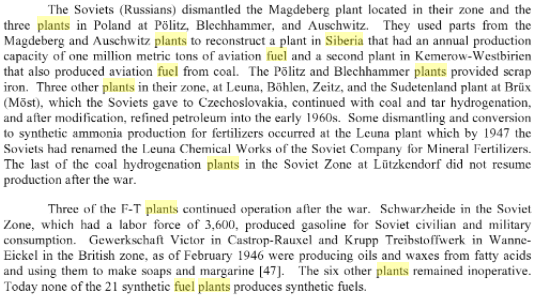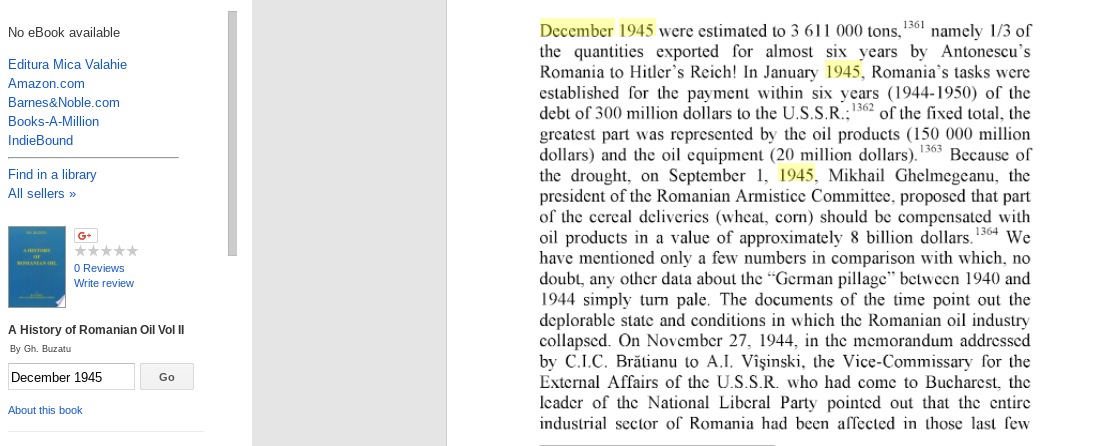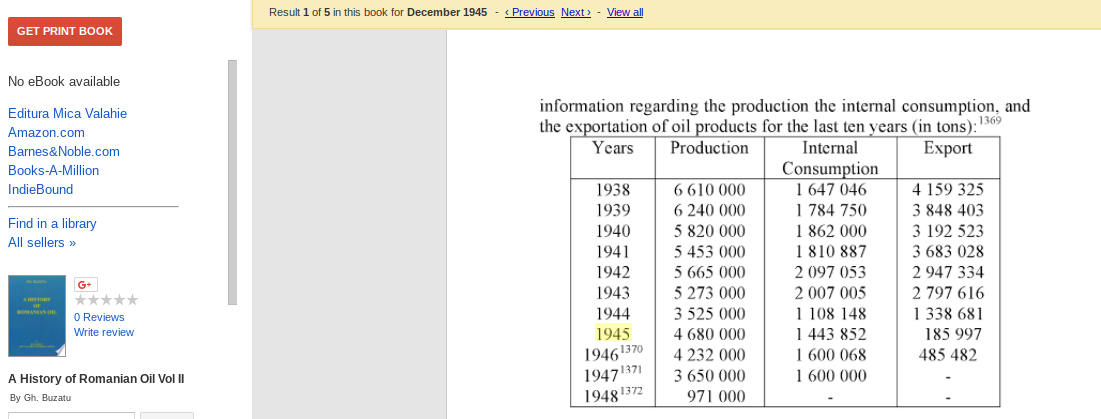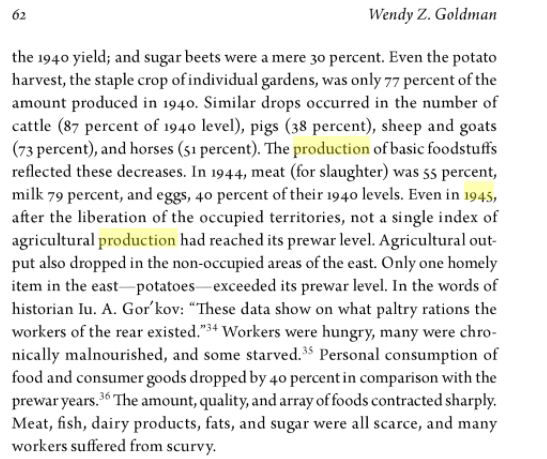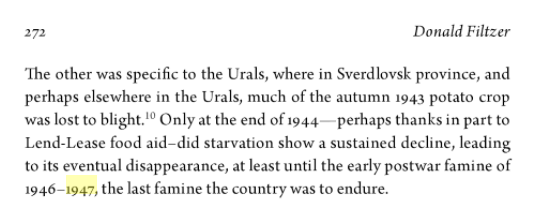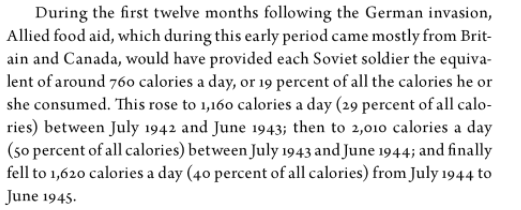Yes I do know what I posted, hence why I'm confused at how you failed to look at the second paragraph I cited which explicitly states only one plant was operational in the Soviet zone and it was not one they deconstructed for transport IOTL.
Because, as I've said, those plants are irrelevant to my argument. They aren't the plants which we are discussing and which would be relevant to the actual Soviet production in the scenario. The relevant plant here is the Siberian plant, constructed from the Blechhammer, Politz, and Auschwitz plants,
and your post gives zero indication of when it came online.
Although since we're on the subject, do we have any idea what the productive capabilities of the Schwarzheide plant were? That could be good to know, even if it's only additive to the Siberian facilities production (and maybe those American refineries as well).
No, you've seem to forgot what the point was and it's not the capabilities of the Siberian facility:
Except it is? If the Siberian facility goes online in 1945/46 and can provide a million tons of high-octane Avgas to the Soviets annually, then that by itself is in excess of their annual needs by about 250,000 tons and the whole supposition of the Soviets having to suddenly ground around half their air force becomes total persiflage. Not to mention the Soviets successfully overrunning western Germany would mean the sudden acquisition of
the rest of German synthetic and refining capacity, which could then be transported back to the USSR if not immediately utilized for their own purposes.
At this point, you need to make a citation that proves your claim because my own research shows something entirely different.
I don't have anything which specifically gives the dismantlement of the Blechhammer, Politz, and Auschwitz plant occurred and the subsequent reconstruction at the Siberian plant, but Osjerski in his book indicates the period of major stripping of industry from Eastern Europe in general occurred in 1945-46. Given that the wording is general, it is possible that some specific industries were stripped out later on a smaller scale.
The source in question states it was not repaired and we know by 1948 it utterly collapsed. For someone who has argued with me extensively on the issue of German material production in 1944/1945, you should understand quite clearly how this can work; we know German production going into the fall of 1944 was on the increase but it was due to utterly collapse by the following Summer because of loss of inputs and the bombings.
Hmm... so you would describe the '45-'46 production figures as sort of the last gasp of the failing system? Fair enough. I can see it.
Because I'm arguing on multiple points. Further, do I take your stance on this as a concession on the AV Gas? Genuinely asking here, because if not I'd suggest AHF but I'm sure you've already messaged Art probably.
I've already poked around AHF a bit but can't find anything on actual late/post-war production, although maybe I'm looking in the wrong sections. Hard figures on Soviet high-octane avgas production for 1945-1950 are apparently impossible to pin down: the best I can find are CIA estimates which, while the numbers they provide are in excess of what I know the Soviets consumed during the war, are known to have serious accuracy issues. I've had to resort to back-end calculations based on consumption to determine possible minimums. If your asking if I concede on the Avgas issue in regards to the Romanian plant? Then yes, because I was unaware that the Romanian plants did not produce high-octane Avgas.
It directly addresses the immediate period leading up to the famine and it is unequivocal on the issue of Lend Lease:
Actually, this raises a major point that I need to correct myself on; previously I stated Lend Lease was providing just a fifth of all rations to the Red Army in 1944 but in the 1944-1945 period
it was actually still 40%. Given that now the Soviets must make up for this,
Great, except additional harvests occurred in 1945. What evidence do you have that those did not provide enough food?
You misunderstand the point; if Soviet production was 95 tons in 1940, I real doubt the 2-3 million tons in storage could prevent starvation, especially given the above bit on Lend Lease.
You seem to be a bit confused about which figures are which. The amount in storage wasn't 2-3 million tons. That's the rough amount that was estimated to be needed to feed those who died. When it comes to storage, the Soviet state began the year with 6.8 million tons in the reserve and procured 29.6 million tons for a total of 37.7 million tons. Total usage of the state grain reserves comes out to 31.1 million tons, leaving the state with a reserve of 6.6 million tons by the end of the year. This is purely grain from the stores of the Ministry of Procurements and excludes grain released from the stores of other agencies (such as the Ministry of Food Reserves). So the numbers show that the reserves of just one ministry of the Soviet Union had around two-three times the amount of grain needed to prevent the famine. The food simply didn't make it's way to the people who needed it.
Because if the issue was a matter of being inept, a war does not magically fix that incompetence and if it was malicious in origin nor does a war change the decision to do so. I'd also think mass starvation would have a hell of an effect on the Red Army's fighting ability, no?
It didn't OTL: there is no evidence that the much more severe wartime famines had any impact on larger Soviet society or the fighting performance of the Red Army.
Between the Baltics and Ukraine alone there is probably 150,000 partisans compared to just 180,000 against the Germans at the height of the Great Patriotic War. As for the air war, they have no AV gas and the Anglo-Americans have yet to demob their air forces. Given that, no question the Reds lose the air at best in a few weeks, and they'd never hold air superiority in the first place.
Okay and? You've just admitted that the Soviets are operating with less partisans then the Germans were and the Germans didn't exactly see their supply chains totally disappear to those larger partisan forces. Your claims about avgas remain rather unfounded (even ignoring the production argument, do you think Soviet stockpiles magically vanish into the aether the moment war begins?) and while Anglo-American air forces are not yet fully demobbed by ATL November 1945, they
would in the wrong place and can't exactly teleport from over the Pacific. It would take months to transfer back (assuming the US doesn't decide to keep them in the Pacific until Japan's defeated) and even once they get over here, they still have to fight the Red Air Force and the history of air warfare suggests that'll be a attritional struggle of years, contrary to the fantasies of people who don't understand strategic air war.
No, absolutely not and I know you know better than this. Army Group Center had its armored divisions stripped from it, had massive artillery shortages, had just 44 fighters, was in a forward position on the largest front of the Wehrmacht in Russia, and had a commander who refused to allow surrenders and did not accept intelligence that contradicted his beliefs.
…
Again, no.
I'm not talking about Army Group Center, I'm talking about the whole of the Eastern Front: even in the places the Germans were supposed to be stronger, the Soviets scored crushing victories. Given that the Anglo-American mechanized and artillery formations would be some of the first to be demobbed or transferred (don't need them for occupation and they could be put to more productive use invading Japan), the armor and artillery ratios will likely be as favorable, if not more so, to the Soviets as against the German army. I've already dealt with the air issue up there. Having a commander would be more of a benefit and WAllied intelligence against the Soviets tended to be poor so it's not like there's much for them to go on.
